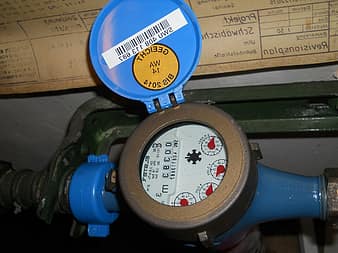How to Detect A Leaking Pipe
It is best to check for water leaks as soon as possible to save money and avoid further damage to your plumbing system and home. Here are some things you can do to see if you have a water leak and whether you should call a plumber for water leak repair services.
Related Articles
1. Check the Water Meter
If you have a leak in some parts of your plumbing system, one of the most important ways to find out is to check your water meter. In doing this, first, you have to turn off all the water supplies in your home.

All faucets and water outlets should be shut off, and this includes making sure that the dishwasher and washing machine are also turned off.
The next step is to monitor and observe the water meter for any changes in readings. If the wheel (usually blue or black) changes or spins, you most likely have a leak. If it does not change immediately, check it again in 15 – 30 minutes. If it has changed despite turning off all water sources, you may have a slower leak. If nothing changes but you still suspect a leak, you most likely have a leaking pipe outside your home.
You will only discover that you have a serious leaking problem in your plumbing system if you consume more water every month.
2. Monitoring the water bill
If you notice that your water bill is consistently increasing but your water usage hasn’t changed, most likely there is a leak causing the surge in price. Compare your previous water bills to the current ones and see if there’s any steady increase. Ideally, your water bill will remain consistent month to month.
3. Checking the plumbing fixtures inside the house
Once you turn off the water supply temporarily, check for any leaking faucets and toilets, any flapper valve leaks, overflow tube leaks, flush handle problems, and other water leaks.
Toilets are the most common areas for leaks to occur, and a toilet consistently running on and off when not directed, will likely lead to the addition of hundreds of dollars to your water bill. If you suspect your toilet is leaking, you can perform a toilet dye test. A common problem for toilets is a damaged flapper valve so that might be the cause of your leak!
Moreover, leaking faucets are generally the result of the worn rubber washer. Water from the faucet is delivered under pressure making a leak more obvious.
4. Check the exterior usage
Leaks not only happen inside the home but also occur outside as well. By checking your outside spigot, attach a garden hose, and look for any water seepage through the connection while water is running.
5. Underground leak detection
To check for any underground leaks, look and feel any portions of your property that are always wet. Look also at your driveway, curb, or street for any evidence of water flow. Observe for any puddles that never dry up or a darker spot that happens when water is spilt on dry concrete.
If you suspect leakage anywhere in your plumbing system, consider calling a professional plumber to make the necessary repairs as soon as possible.
Looking for Leak Detection and Repair in Seattle, WA? Call The Pipe Doctor!
If you're looking for a licensed and insured plumbing company to fix any leaks in your home, give our plumbers at the Pipe Doctor a call! We offer quick and dependable leak repair in the Seattle area at a reasonable price. Simply dial (206) 676-2192!
The Pipe Doctor
12345 Lake City Way Ste 311 Seattle, WA 98125
(206) 676-2192
thepipedr@gmail.com
Services
- Hydro Jetting
- Sewer Video Inspection
- Sewer Line Repair
- Sewer Cleaning
- Drain Repair and Cleaning
- General Plumbing

Comments
Post a Comment